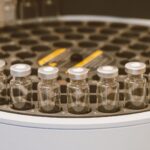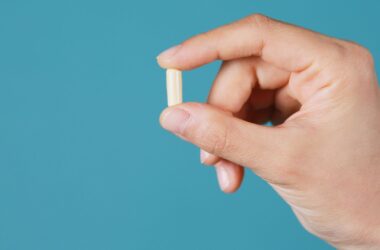The pharmaceutical industry, known for its innovation and commitment to patient well-being, continually evolves to meet the demands of a changing world. A pivotal force in this transformation is the pharmaceutical machine manufacturing sector. In this article, let us delve into the latest and most impactful trends shaping the landscape of pharmaceutical machine manufacturing.
1. Advanced Automation and Robotics:
- Automation is no longer limited to repetitive tasks but extends to complex pharmaceutical manufacturing processes. Robotic systems are now used for intricate tasks like drug formulation, precision handling, inspection, and even packaging. These machines enhance precision, speed, and consistency while minimizing the risk of contamination.
2. Personalized Medicine Production:
- The era of personalized medicine is upon us. Pharmaceutical machine manufacturers are responding by designing machines that can produce highly customized pharmaceuticals in small batches. These machines allow pharmaceutical companies to tailor treatments to individual patient needs, improving patient outcomes.
3. Continuous Manufacturing:
- Traditional batch manufacturing processes are giving way to continuous manufacturing in the pharmaceutical industry. Continuous manufacturing offers greater control, consistency, and efficiency, reducing production time and costs while enhancing product quality.
4. Advanced Process Analytics:
- Machine manufacturing has evolved to incorporate advanced process analytical technologies (PAT). These technologies enable real-time monitoring and control of critical manufacturing processes, resulting in better product quality, faster production, and regulatory compliance.
5. Modular Manufacturing Systems:
- Modular systems are gaining popularity for their flexibility and scalability. Pharmaceutical machine manufacturers are designing systems that can adapt quickly to changing production needs, reducing downtime during changeovers and upgrades.
6. Quality by Design (QbD) Integration:
- Quality by Design principles are being integrated into the design of pharmaceutical manufacturing equipment. This ensures that quality is built into the manufacturing process, resulting in higher-quality pharmaceutical products.
7. Single-Use Technologies:
- Single-use technologies, such as single-use bioreactors and disposable components, are revolutionizing biopharmaceutical manufacturing. These systems reduce the risk of cross-contamination, lower operational costs, and enhance flexibility.
8. Sustainability Focus:
- Environmental sustainability is becoming a paramount concern in pharmaceutical manufacturing. Machine manufacturers are responding with designs that incorporate energy-efficient components and processes. Reducing waste and minimizing the carbon footprint of pharmaceutical production are top priorities.
9. Artificial Intelligence (AI) and Machine Learning (ML):
- AI and ML technologies are being harnessed for predictive maintenance, process optimization, and quality control in pharmaceutical manufacturing machines. These technologies analyze vast datasets in real-time, enabling efficient resource allocation, reducing downtime, and improving overall manufacturing efficiency.
10. Regulatory Compliance and Data Integrity:
- Compliance with strict regulatory requirements is a foundational element of pharmaceutical manufacturing. Machine manufacturers are developing equipment with built-in features that ensure data integrity, traceability, and compliance throughout the production process. This includes robust documentation, audit trails, and validation capabilities.
These detailed trends underscore the transformative nature of pharmaceutical machine manufacturing. As the pharmaceutical industry evolves, these trends empower pharmaceutical companies to produce drugs with greater efficiency, precision, and compliance with ever-evolving regulatory standards. The future of pharmaceutical machine manufacturing holds the promise of even more innovation and advancement in the service of global health and well-being.
Review Heading
Review Heading-
Criteria One3/5 NeutralUt pede leo libero cum ridiculus quis arcu natoque ullamcorper eget nulla sociis. Semper condimentum quam.
-
Criteria Two5/5 AmazingUt pede leo libero cum ridiculus quis arcu natoque ullamcorper eget nulla sociis. Semper condimentum quam.
-
Criteria Three2/5 BadUt pede leo libero cum ridiculus quis arcu natoque ullamcorper eget nulla sociis. Semper condimentum quam.







